- Home
- Radon FAQ
- Passive Radon System Troubshoot
- Radon Suction Pit
How To Drill Your Radon Suction Pit
Drilling a hole for your radon suction pit is an important step for all radon mitigations. By doing this you will be able to determine what kind of soil conditions you have and do soil communication tests as well. This will help in picking the right fan for your situation, what size pipe to use and to succeed in lowering your radon levels. Let’s see how this can be done.
Getting Started
To begin, think of where you will want to run your pipe out of your basement. Be sure to make a thorough examination of where drain pipes, water lines, in-floor heating and electrical conduits may be running under the concrete. If the plans of the house are still available these may be helpful. Please, be careful when drilling! If you are unsure what is under the concrete, stop drilling as soon as you break through it.
Your hole for the suction pit will be 4-1/2” for both 3” and 4” pipe. This will make it easier to have room to dig out your radon suction pit. For 3” pipe, a 4” x 3” reducer will be used at the floor.
Use a piece of 4” pipe to mark the location on the floor based on the center point. Make one small hole close to the wall to be sure that you are not hitting the footer. If you hit the footer, continue drilling holes away from the wall until you clear it. Once your drill bit hits soil, retrace the pattern for the final hole location.
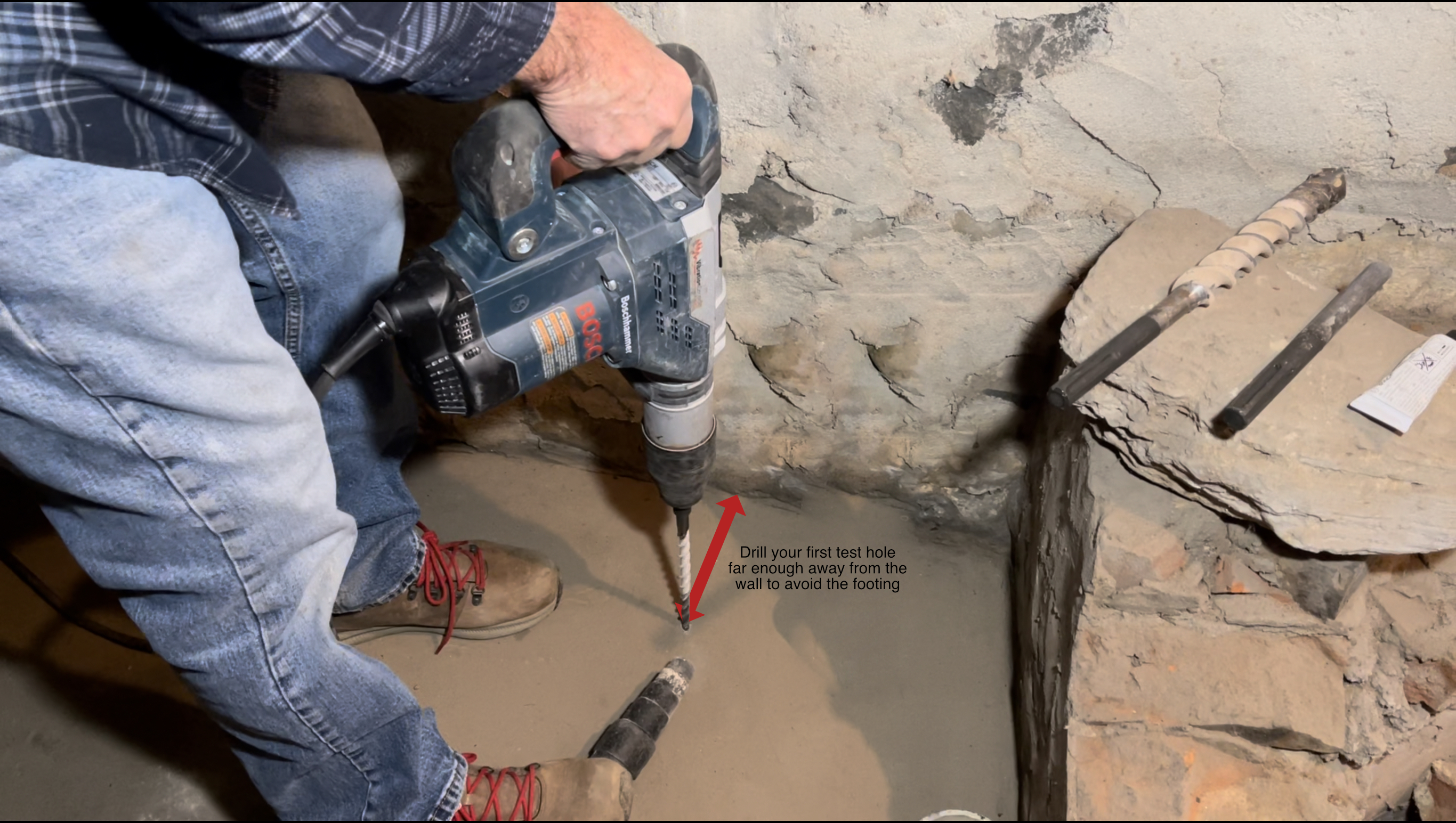
Next, drill a series of holes slightly larger than your pipe size and then chisel out the chunk. A couple of extra holes in the center of the area will make this much easier.
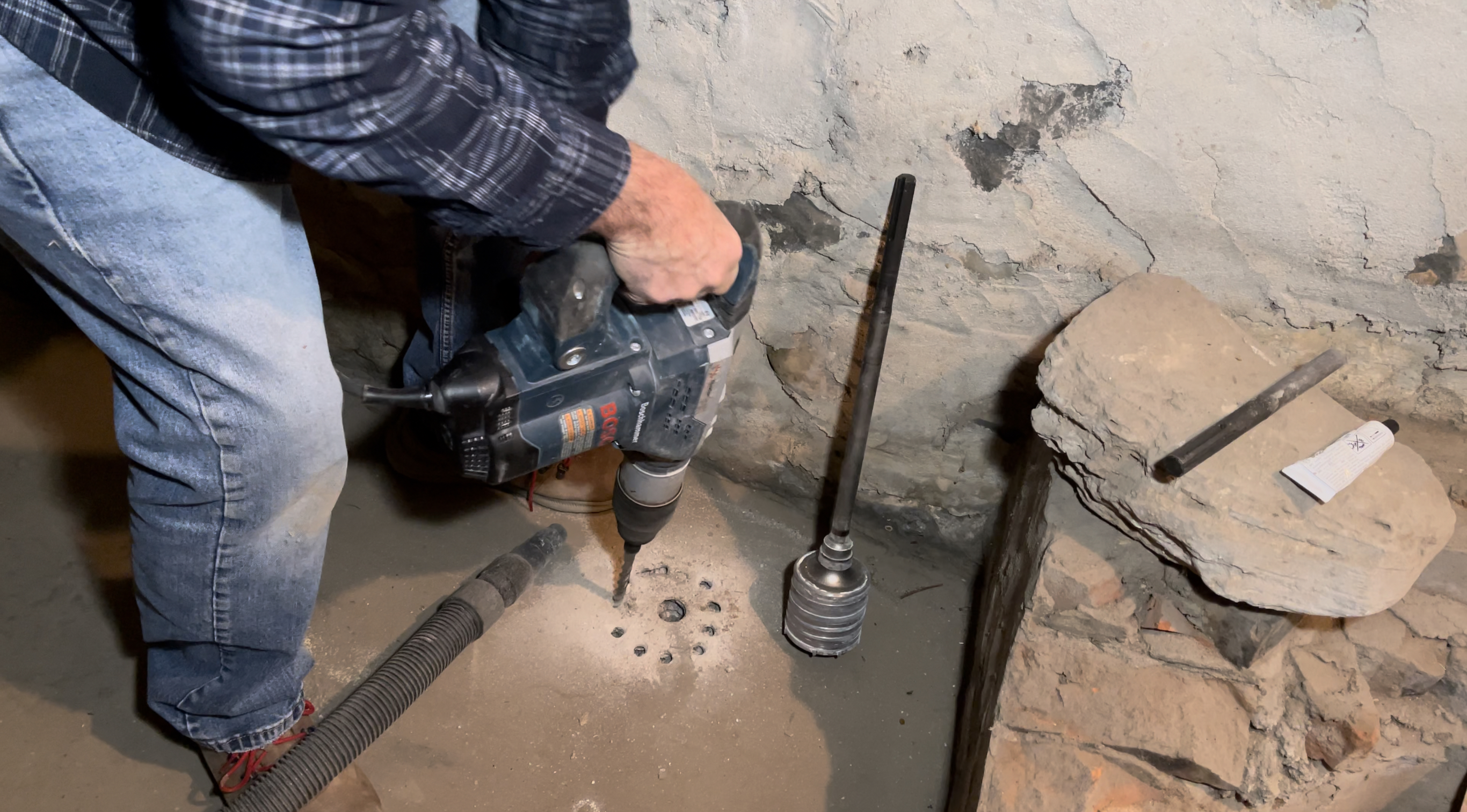
Digging Out Your Radon Suction Pit
Now it’s time to dig! If you have a gravely, sandy mix, a five gallon bucket may be enough. With tight soils like clay, 20 to 30 gallons will need to be removed. This can be the most time consuming and nasty part of the job. Don’t give up as this can make all the difference between a mitigation that works and one that doesn’t!
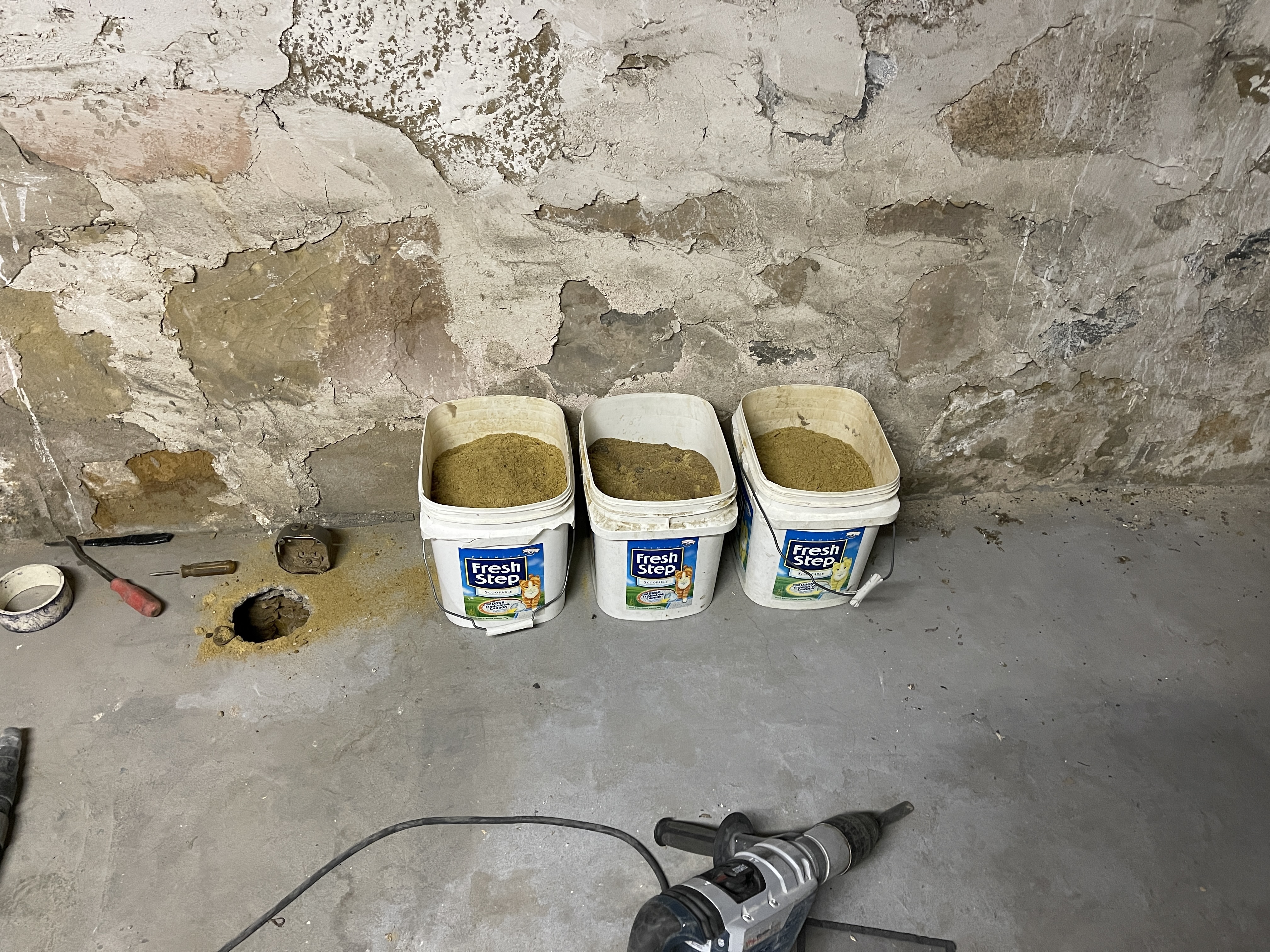
NOTE: Start by digging deep and then start chipping away at the sides. There are usually small voids between the underside of the concrete and the soil. So as you go out from the center scrape the dirt away from the underside of the floor.
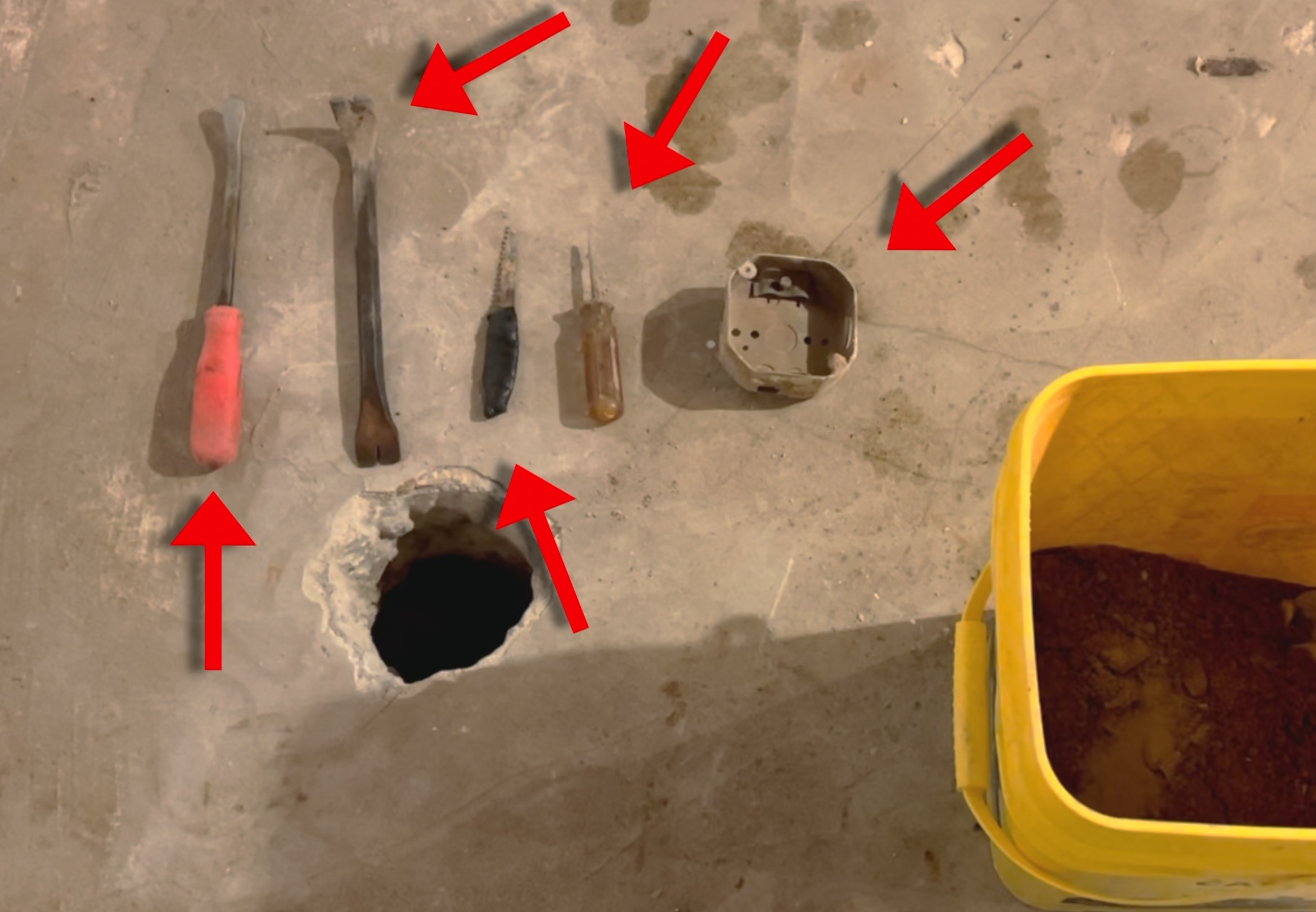
We like to use different tools for digging such as, screw driver, crowbar and chisels. Using different tools, with your arm in the hole, you can create a wide suction pit even in difficult soil conditions like clay. When digging, especially in a sandy location, you can use a shop vac to remove dirt quickly. Using the hose of the shop vac, push it into the hole to increase your reach and focus on creating as many tunnels leading away from your radon suction pit.
Installing The Floor Piece
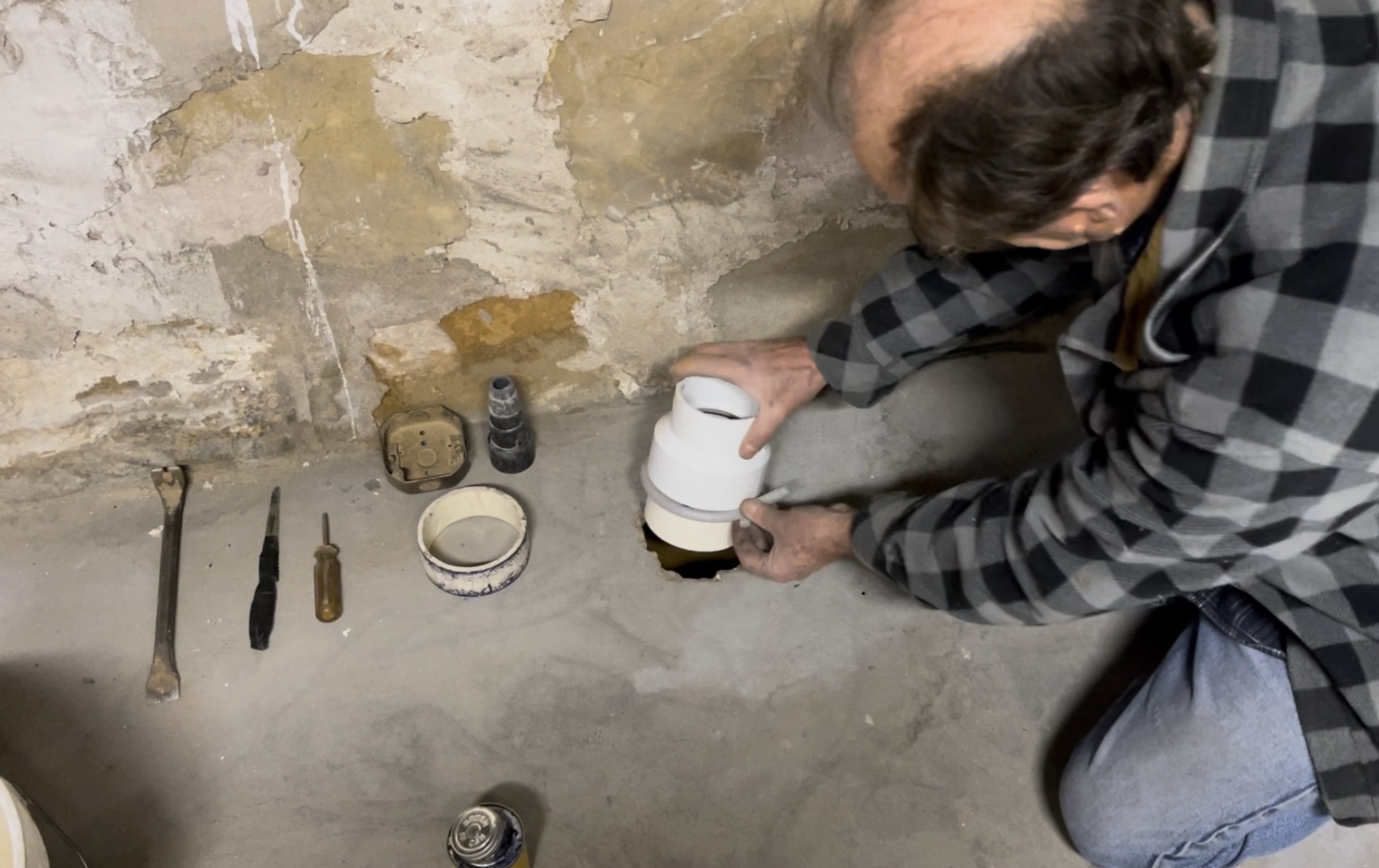
Next, use a coupler/union (floor piece) to begin the vent pipe. Add a 5 or 6 inch piece of pipe that will go into the hole. This piece of pipe will help stabilize the pipe.
Glue the pipe into the coupler and wrap the 3/4” foam backer rod around the pipe and under the coupler and set it in the hole. Use a screwdriver to tuck the backer rod down flush with the floor. You will caulk this joint later with Polyurethane caulk after your pipe is all glued and secured.
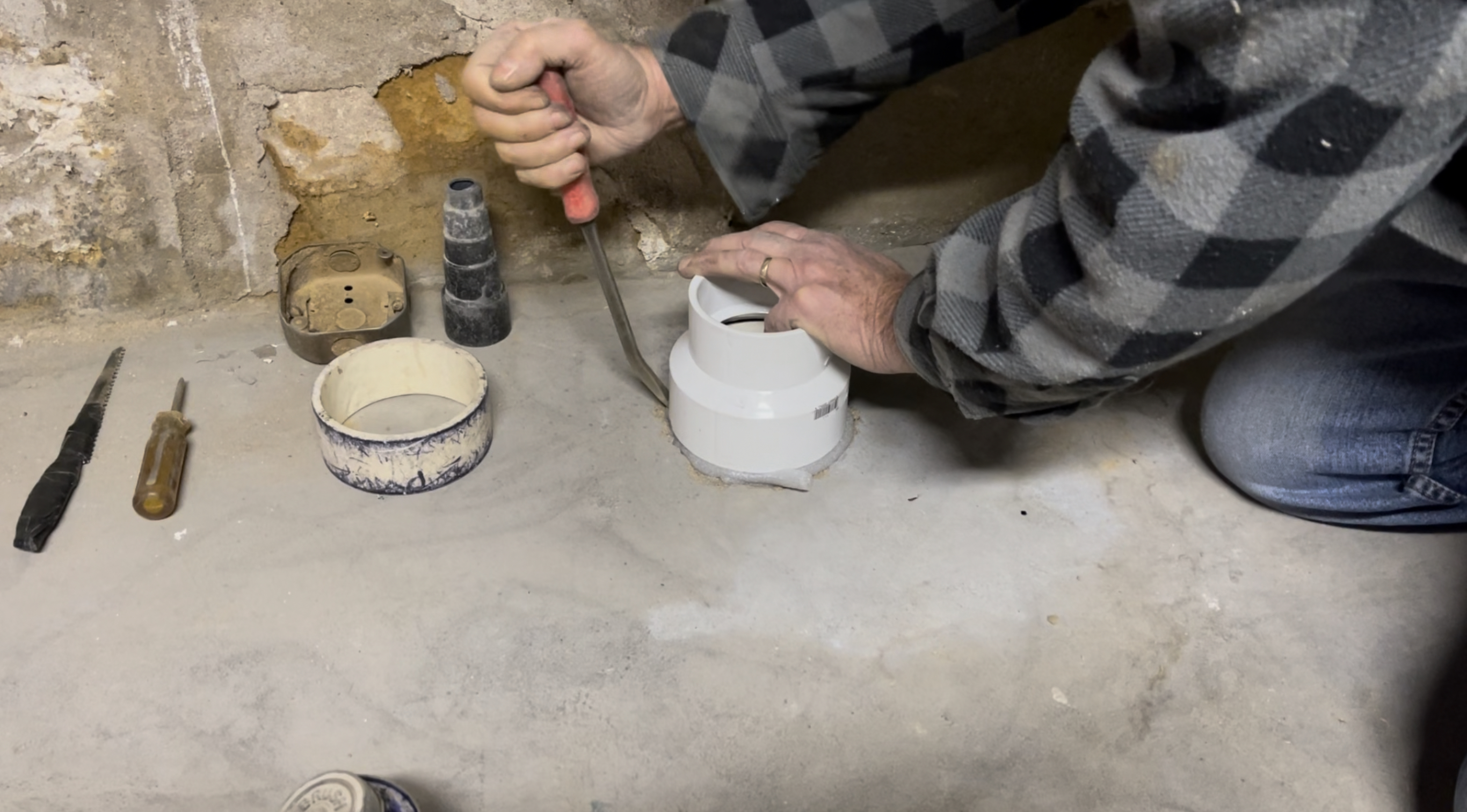
Now you want to measure up to the elbow or the floor above and then cut the length of pipe needed.
Note: Think ahead before gluing PVC pipe. You have one shot to get it right!
If you are gluing to a 90° elbow, glue the pipe to the bottom of the elbow first and then to the horizontal piece second so you can move the whole riser w/elbow onto the pipe sticking out of the wall. When you have this section glued, plumb the vertical pipe by pushing or pulling on it. You can now take a hand saw and cut the pipe off on the other side of the wall. Leave 1-3/4” to glue another 90° elbow to go up through the garage.
If you are going straight up through the floor cut the pipe so that a couple of inches of pipe will stick up above the floor.
Finally, put a good bead of caulk around the pipe and smooth it out with a piece of cardboard. Keep the piece of cardboard upright and tight against the pipe to get the caulk smooth and airtight. Go around a few times and you are done!
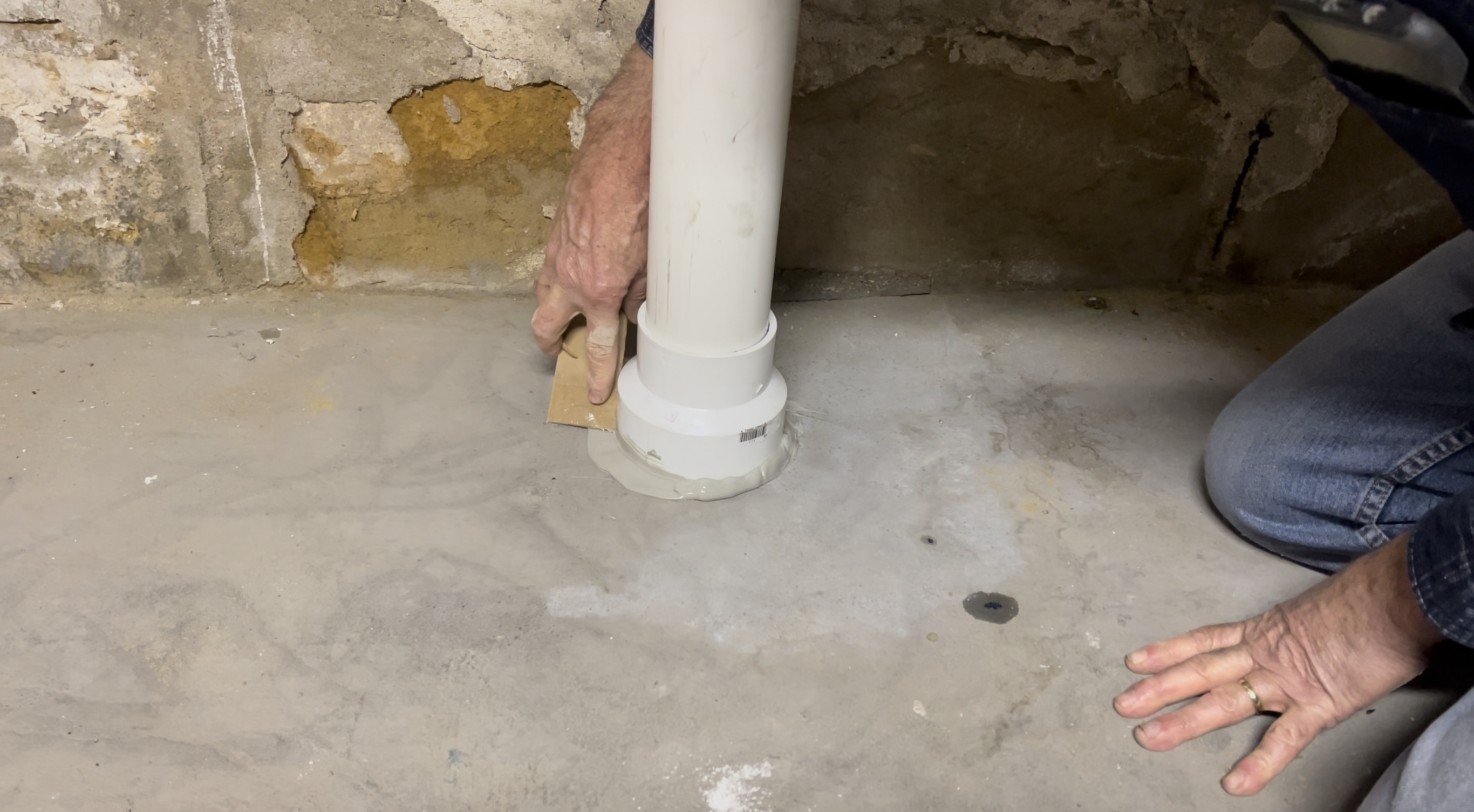
Watch this video for a step by step breakdown on how to drill your radon suction pit.



New! Comments
Have your say about what you just read! Leave me a comment in the box below.